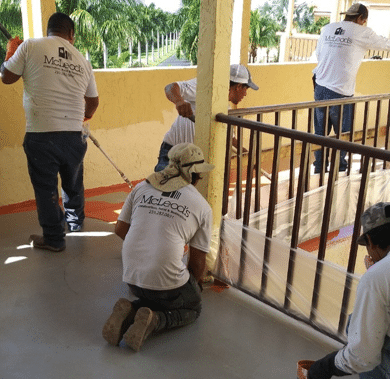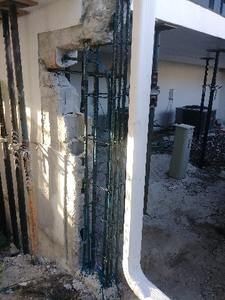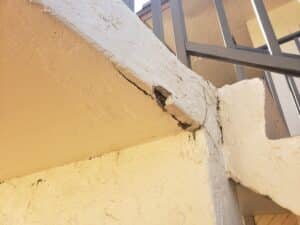Waterproofing plays a critical role in ensuring the longevity, functionality, and overall value of any commercial property. Uncontrolled water intrusion can lead to a cascade of negative consequences, including structural damage, mold growth, and costly repairs. These issues can disrupt daily operations and pose potential safety hazards.
So, let’s delve into the essential best practices for waterproofing commercial properties. Here, we’ll explore the key considerations for effective waterproofing solutions, from selecting the appropriate materials and techniques to ensuring proper installation and ongoing maintenance.
By understanding these crucial elements, property owners and managers can make informed decisions that safeguard their investments and protect the integrity of their buildings for years to come.
Understanding the Key Areas to Waterproof Commercial Properties
Waterproofing a commercial property effectively starts with identifying the key areas that are prone to water intrusion. One of the most critical areas to address is the roof. Roofs are constantly exposed to the elements, including rain, snow, and extreme temperatures, which can cause wear and tear over time. A proper roof waterproofing system, such as membranes or coatings, prevents water from penetrating the surface and causing structural damage.
Basements and foundations are also crucial areas that require waterproofing. Water can seep through cracks in the foundation or basement walls, leading to moisture buildup, mold growth, and potential structural issues.
Applying waterproofing products like sealants or installing a drainage system can help keep these areas dry and stable. Exterior walls, particularly those exposed to heavy rainfall or wind-driven rain, should be equipped with waterproof coatings or barriers to prevent moisture infiltration.
Types of Waterproofing Materials and Their Uses
Choosing the right waterproofing materials for your commercial property is essential for achieving the best results. Various materials are designed for specific applications, each with unique properties and benefits.
1. Liquid Applied Membranes: These are versatile, easy to apply, and form a seamless barrier against water. They are ideal for roofs, basements, and complex surfaces with many details and penetrations.
2. Sheet Membranes: Often made from rubber or PVC, sheet membranes provide excellent waterproofing capabilities. They are typically used for roofing, green roofs, and below-grade applications.
3. Cementitious Waterproofing: This type of waterproofing involves a mix of cement-based compounds that are applied to surfaces like walls and floors. It is commonly used in wet areas such as bathrooms and kitchens.
4. Bituminous Coating: Also known as asphalt coating, bituminous coatings are highly durable and commonly used for foundations, basements, and roofs. They offer strong protection against water and are easy to apply.
5. Polyurethane Sealants: These sealants provide strong adhesion and flexibility, making them suitable for sealing joints and cracks in concrete and masonry. They are resistant to chemicals and weathering.
By understanding the different types of waterproofing materials and their specific applications, we can choose the right solutions for protecting our commercial properties from water damage. This ensures a more durable and long-lasting defense against moisture intrusion.
Step-by-Step Guide to Applying Waterproofing Solutions
Applying waterproofing solutions correctly is essential for ensuring they work effectively and provide lasting protection. Here is a simple step-by-step guide to help us apply waterproofing solutions to our commercial property:
1. Prepare the Surface: Begin by cleaning the surface thoroughly. Remove any dirt, debris, or old waterproofing layers. Ensure the surface is dry and free of any loose material. Use a wire brush, broom, or pressure washer to clean large areas, and a vacuum for smaller, intricate spaces.
2. Repair Any Damage: Inspect the area for cracks or holes and repair them before applying the waterproofing solution. Use a concrete patch or filler to fix any damages. Let the repairs dry completely as per the manufacturer’s instructions.
3. Select the Right Waterproofing Material: Choose the appropriate waterproofing material based on the type of surface and the specific needs of the area. Refer to our earlier section on different materials to make an informed decision.
4. Apply the Waterproofing Solution: Follow the manufacturer’s guidelines for application. For liquid applied membranes, use a roller or brush to apply an even coat. For sheet membranes, carefully lay the sheets and ensure they overlap correctly to avoid gaps. For cementitious waterproofing, mix the compound and apply it with a trowel or brush.
5. Cure and Inspect: Allow the waterproofing material to cure fully. This may take several hours to days, depending on the product. Once cured, inspect the area to ensure complete coverage and look for any missed spots or imperfections.
By following these steps, we can achieve effective and long-lasting waterproofing results on our commercial property.
Maintenance Tips to Ensure Long-Lasting Waterproofing
Maintaining waterproofing solutions is critical for their longevity and effectiveness. Regular upkeep prevents issues from arising and extends the life of the waterproofing materials.
1. Regular Inspections: Periodically inspect all waterproofed areas for signs of wear or damage. Look for cracks, peeling, or damp spots that may indicate a compromise in the waterproofing layer. Address these issues promptly to prevent further damage.
2. Clean the Area: Keep the waterproofed areas clean. Remove debris, leaves, and dirt that can trap moisture against the surface. This is especially important for roofs and basements. Use gentle cleaning methods to avoid damaging the waterproofing material.
3. Repair Promptly: If you notice any damage or wear, make repairs as soon as possible. Small issues can quickly escalate if left unattended. Use suitable materials to patch and reseal any affected areas, ensuring they remain watertight.
4. Monitor Drainage Systems: Ensure that gutters, downspouts, and drainage systems are functioning correctly. Proper drainage prevents water from pooling near the foundation or roof, reducing the risk of water intrusion.
5. Reapply as Needed: Some waterproofing materials may need reapplication over time, especially in areas with extreme weather conditions. Follow the manufacturer’s recommendations for reapplication intervals to maintain effective protection.
By following these maintenance tips, we can ensure that our commercial property remains protected from water damage for years to come.
How Effective Waterproofing Protects Your Commercial Building
Waterproofing a commercial property requires careful planning, selecting the right materials, and proper application techniques. By understanding the key areas to waterproof and using the best materials for each specific need, we can protect our buildings from the damaging effects of moisture. Regular maintenance and timely repairs further ensure the durability and effectiveness of our waterproofing efforts.
Taking these steps helps us maintain the integrity and value of our commercial properties, providing a safe and secure environment for occupants and operations. For expert guidance and professional waterproofing services, contact McLeod’s Contracting Solutions. Our team of certified and insured general contractors in Florida is ready to help you protect your investment with the best waterproofing solutions.







